Text
How to spot info-dumps
Afraid you’re info-dumping in your novel?
Here are some big things to look out for, and make sure you’re not overloading your readers with information
Backstories
Sometimes a few sentences to place a person in some context can be a great way to paint a picture of someone. But going too deeply into their backstories and telling us where they came from can feel a little cheat-y to your readers.
Dialogue dumps
Dialogue dumping can be spotted by putting yourself in the position of your characters in their current moment and asking whether they would ACTUALLY be saying the information you’re having them say, or the person they’re talking to might already know it.
Exposition & world-building
Does your reader truly need to know all the amazing details about your world right off the bat? Likely the answer is no. The hard truth is that most of your world-building won’t explicitly make it into your book. If you find yourself explaining how things work in your world, it’s a surefire sign of info-dumps.
Prologues
Don’t use your prologue as an excuse to info-dump everything you think your reader needs to understand the story. It won’t stick and it won’t be important to them before they’ve actually connected with your characters. Organic world-building throughout your story will always capture more attention!
Prologues are for setting up questions, not answering them!
Do you need help writing your book? Have you heard about my coaching program? I take you from an idea to a first draft in 16 personalised weekly calls, with unlimited feedback on your work.
Check out Power Plotter through the link HERE or below!
Also...
The price for the program is going up at the end of the year, so make sure you book your slot before the end of 2023 (no upfront payment needed to book this!)
#reblog#writing advice#writing tips#writing#writeblr#infodumps#narrative writing#creative writing#common mistakes
242 notes
·
View notes
Text
Sad plot ideas besides killing characters
Need sad story ideas that aren’t character deaths? I’ve got you covered! Here's 14 sad plot ideas that don't require character deaths!
Having to give up an item of huge emotional importance
A leader being abandoned by their own people
Redemption arc that comes just a little too late
Making a mistake that’s too big to be forgiven for
Unrequited love with a childhood best friend
Betrayal by a sibling, parent or child
Realizing who they truly love when it’s too late
Not being believed by those closest to them when it really matters
A character who’s completely at peace with their tragic destiny
Relapsing on an addiction after doing so well
Making an honest mistake that leads to horrible consequences and endangers people they love
Trying so hard time and time again, and still not achieving any results
Having to watch a friend or family get tortured without being able to stop it
Realizing someone they love is in danger, but they’re the ones who sent them into it
Also���
Did you know I’m launching a Youtube channel? The first video will be up January 2023. Make sure to subscribe so you don’t miss it!
💜 You can find the channel through the link HERE or below! 💜
2K notes
·
View notes
Text
Reasons to Kill Your Characters
Killing your characters at the right time (and having a reason behind it) is important. Here are some reasons behind why you might want to kill a character or two.
1) It can serve as poetic justice. This is when the bad guys are punished and the good guys are rewarded. When the antagonistic force finally gets what they deserve, it can satisfy the reader. If you’ve ever watched Game of Thrones, you know how angering it is when the bad guys always preserver. Giving them a well-deserved demise can be like lemonade on a blistering hot day for your reader.
2) Can death strengthen your current theme? Is your theme love, friendship, betrayal, good vs. evil, survival, etc.? Death can be used to intensify each and every theme. Someone who’s afraid to love because of past loss, a friendship bond broken by a death, a betrayer killing your protagonist’s friend.
3) It can develop your protagonist and advance the plot. While you might not want to necessarily kill a character for the sole purpose of hurting your protagonist, if the death does achieve that, you’re developing them! Does this death motivate them to push forward? Does it put a hole in their plan? Create new conflict? Deaths can be great for moving the plot forward or putting obstacles in the way of your cast.
4) Killing certain characters can bring closure to their story/arc. Sometimes death can be the best way to end an arc. Depending on who the character is, after they’ve served their purpose to the story, is it better to let them linger, have their story continue off page somewhere or to kill them?
5) Death can build tone. If your tone tone is happy and lighthearted then this isn’t for you. However, if the tone you’re going for is tragic, dark and/or dreary… death can intensify that vibe. (Not just the death of characters… but the death of a time period, happiness, animals, flowers, etc.)
6) Death adds realism. Loss is apart of life (sadly). Is it actually realistic for everyone to survive at the end of an epic fantasy journey? Especially when most of them are novices learning along the way, running into skilled villains, dangerous creatures and mysterious illnesses? Death comes and goes whenever, wherever. This unexpected element can add realism to your story.
7) Shock the characters and your reader. This one is risky. You’ve probably heard it before– killing a character out of the blue with no foreshadowing or reasoning can upset the reader. However, you can still have an abrupt death that has meaning. A selfish (yet beloved) character who suddenly sacrifices himself for another. He wasn’t expected to die, but the way he did had meaning.
Instagram: coffeebeanwriting
#reblog#writing tips#writing advice#writing#writeblr#writblr#narrative writing#plot building#character death
1K notes
·
View notes
Text
Writing Theory: A Great Opening Chapter
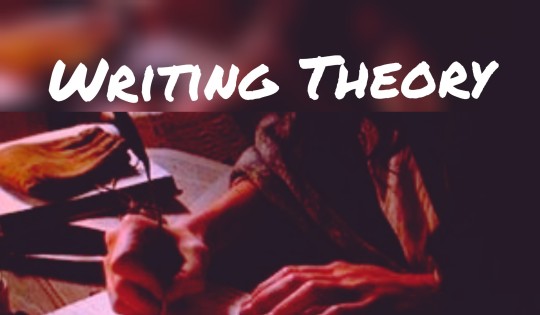
The first step a reader takes into your story & world is through the opening chapter of the novel. Opening chapters are the writer's way of introducing their characters, plot and world to a stranger: just as important as a handshake at an interview. Thank you to @curiousloveable
What makes a First Chapter Pop for a Reader?
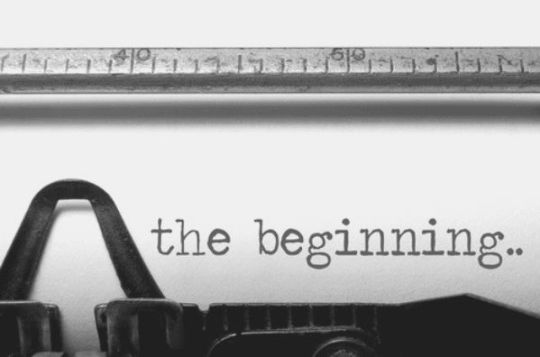
Some readers are fickle and will abandon books without an interesting first chapter. Some power through and discover the story beyond. But you cannot go into writing the opening chapter thinking such. First Chapters are your way of introducing your story to a stranger. You want to make the right impression, put your reader in the right mood.
As a reader myself, the most entertaining opening chapters are those that are not bogged down by expostion and terrible character descriptions. They are the ones that tell you where you are, what you're doing and who is leading you through the story. Your opening chapter should be concise and to the point. Your reader doesn't care whether your character has eyelashes that smwould shame a cow or likes to butter their toast sideways. It's not important yet unless your bovine MC is going to survive the opening act of the plot because they butter their toast lift to right.
Kinds of Opening Chapter
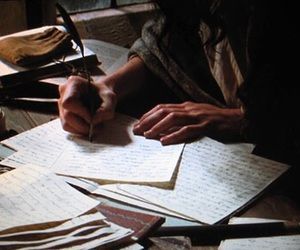
There are 3 kinds of opening chapter, which I have given sone helpful names:
The Jump Into it: The jump into it is basically an action-packed chapter. The reader comes upon the characters in the thick of the story. This kind of chapter has a great hook as it immediately plants the reader in the middle of things with no explanations. These chapters are usually very effective but can alienate readers who prefer a more structured story slope. The example here is the opening chapter of Maze Runner by James Dashner. Thomas is in the lift about to be delivered to the Glade. We experience first hand his fear, his confusion and the world from his Pov which is a pretty clever truck as we begin life at the Glade just like Thomas.
The Gentle Slope: This chapter begins the story off at a slow or middling pace in order to ease your reader into it. These chapters usually show the character's life before it goes to shit. Readers learn about the world and get to know their narrator. Our example is the The Hunger Games by Suzanne Collins. We are introduced to Katniss and her life, we hear about her family and the eponymous Hunger Games.
The Skew: This chapter dies not focus on the main protagonist, instead focusing on another character or storyline, associated but not connected to the MC. These chapters place your character into the world and basically lay the foundations of what your story will become. These chapters are mainly written to provide ground for the rest of your story to stand on. In A Game of Thrones, the book opens with a chapter focusing on the Wights or White Walkers and the Night's Watch who have stumbled upon them. We learn about the Night's Watch, the threats they face and are introduced to the main antagonist of the series. The same can be said of Harry Potter & the Philosopher's Stone. We are introduced to the Dursleys, to Dumbledore and to Harry. We hear about Harry and the events that orphaned him and will echo throughout the series.
What should be included in an Opening Chapter?
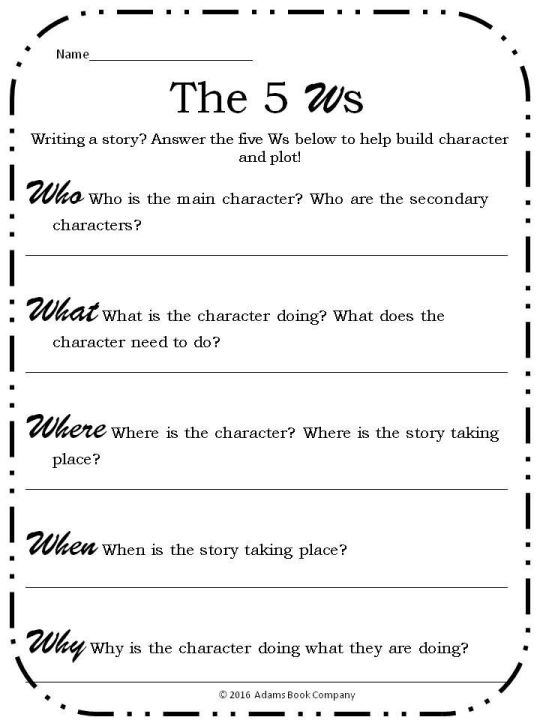
As I said, the opening chapter is the introduction to the story. An opening chapter should have the most fundamental things a reader should know about your story & the narrator.
Firstly, the fundamental:
1) Who is the Narrator?
2) Where are we?
3) What's happening in your narrator's life? / Around them?
The Optional/Subject to story type:
1) introduce antagonist or conflict
2) inciting event to rest of plot
Some things you should remember

Your first draft doesn't matter. You can akways go back to fix it. Think of it like a stepstool in front of a ledge, you need to stand on it to get where you're going. Don't sweat it. You can beat yourself up about it after.
Your characters should not push their luck with the reader yet. Your character is a stranger and your OC needs to make an impression. Throw out the "I'm not like other girls" or the "I'm the baddest boy on this block". Your reader doesn't have time for this yet.
Make your reader love your OC or at least relate with them. Your OC is your reader's guide in this world, they must relate or like them at least a little bit. It will cast your OC into dull lights for your reader and may poison the plot.
Don't overwhelm your readers with jargon yet. Give them the most fundamental facts about the world as they need. Think of it like this: your reader needs to know they are on Earth but they do not yet need to know about the Big Bang created it all.
#reblog#writing tips#writing advice#writing#writeblr#writblr#opening chapter#first chapter#narrative writing#creative writing
3K notes
·
View notes
Text
ok guys for real how do you naturally describe your narrator characters
#reblog#writing advice#writing tips#writing#writeblr#writblr#creative writing#descriptions#narrator description
74 notes
·
View notes
Note
I'm writing a story but I'm really curious on how to describe characters without over doing it, like any tips on describing a person but not in full detail
Great question! Here is a resource I put together a few months back on how to physically describe your characters including hair and eye color, race and ethnicity, height and more. When it comes to descriptions, the lesson “less is more” really applies; as readers, we want to know that we’re imagining characters correctly but if you describe their eye color as often as you use their name, the eyes might as well be narrating. More important, if you’re worried about over-doing the descriptions, then focus on the descriptions that tell us about who the character is; blue eyes are genetic; they’re not a mark of who the character is as a person, what they feel or think. Having smudged make-up, broken glasses/expensive glasses, bags under their eyes tells us so much more (in one description we’re not only seeing who the character is, but understanding where they come from–their wealth or lack thereof, their sleep habits, stress levels, etc.)
Here are some other resources I found that I hope will help:
Describing Characters: Be Subtle
The Writer’s Bane: Describing a Character’s Physical Appearance
Describing Characters: Moving Beyond Hair and Eye Color
How to Describe The Way Your Character Looks in a Story
How Do We Describe Our Characters?
#reblog#writing tips#writing advice#writing#writeblr#writblr#creative writing#character description#descriptions
689 notes
·
View notes
Text
How to write kiss scenes with examples
Want to know how to write perfect kiss scenes?
Personally, I adore writing these intimate moments between characters, especially during a slow-burn. My best advice? Less is more. I know how tempting it might be to get to that kiss scene, and to then have your favorite couple kiss every other page, but truly the longer you can postpone and the less of these intimate moments you show, the more your readers will latch onto the couple and anticipate their next MOMENT. And when that next moment comes, you can really give it your all and feel the impact on your audience.
1. Allow buildup
You don’t always have to go straight into a kiss! The nerves of anticipation when you know it’s going to happen can really emphasise your character's feelings.
Stephen Chbosky - Perks of being a wallflower
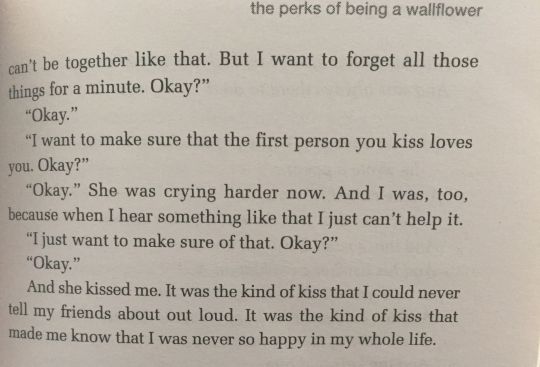
2. Don’t shy away from metaphors
Lord Byron - Don Juan

3. Emotions, emotions emotions
Charles Dickens - Great expectations
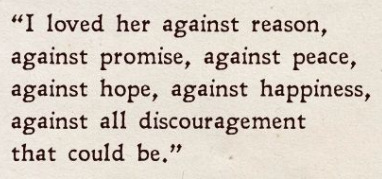
4. What other senses and details can your character notice?
Jeffrey Eugenides - Middlesex

5. Don’t overthink it
Feeling, repetition, and simplicity can work really well, especially from 1st POV. Sometimes we lose all our thoughts and ability to speak in emotional moments, and that’s just as beautiful.
Benjamin Alire-Saenz - Aristotle & Dante discover the secrets of the universe
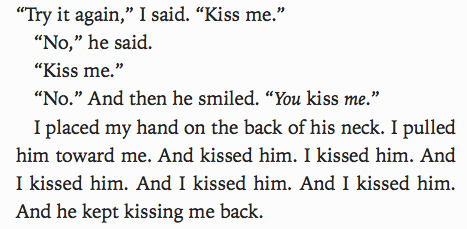
6. Be wary of detailed descriptions!
One thing I will advise to stay aware of is that you don’t need detailed descriptions of the mouths or tongues or bodies. Especially if your moment is meant to be sweet and emotional - having tongues wrestle for dominance can take your reader out of it very quickly.
Remember to save this post for kiss quote inspiration!
#reblog#writing advice#writing tips#writing#writeblr#writblr#creative writing#kissing scenes#kissing#description#narrative#prose
418 notes
·
View notes
Text
97 character motivations
Need a masterlist of character motivation ideas?
Here’s 97 different character motivations you can use for anything from your hero, side-characters, villain, or even to craft smaller subplots. Save this post for later!
Saving a family member from capture
Saving a sibling from disease
Saving a pet from danger
Saving the world from ruin
Saving a friend from heartbreak
Saving the town from financial ruin
Saving friends from dangerous deadly situations
Saving a love interest from dying
Saving themselves in a dangerous world
Saving a community from falling apart
Saving a child from a potentially dangerous circumstance
Saving a place or location from evil forces
Saving a ghost from limbo
Overcoming a phobia
Overcoming an addiction
Overcoming marital struggles
Moving on from loss
Finding a significant other
Finding a new family (not blood-related)
Finding true biological family
Finding out an old secret
Finding a way home
Reconnecting with long-lost friends
Getting out of a dark state of mind
Finding peace in life
Beating a disease
Beating an arch nemesis
Forming a peaceful community
Transforming a location
Bringing someone back to life
Winning a competition
Going on an adventure
Getting a dream job
Keeping a secret
Escaping a location of capture
Proving a moral point
Proving a political point
Winning a political campaign
Betray someone
Ruin someone’s life
Find a suspect or killer
Find the answer to a mystery
Discover ancient sites & secret histories
Perform a successful ritual
Summon the dead
Save a country from dictatorship
Become the most powerful in a community
Outshine a family member in business success
Prove someone wrong
Win prize money to help someone in need
Get revenge on someone who wronged them
Find the person who wronged them
Develop significant scientific progress
Gain respect from family
Get over an ex-lover
Move on from a painful death
Keep their community alive
Lead their community
Heal people in need
Preserve a species (animal, alien, plant…)
Discover new world
Get recognition for hard work
Become famous
Get rich to prove themselves to people who doubted them
Break a long tradition
Challenge the status quo of a community
Defeat a magical nemesis
Take over a location to rule
Find out truth behind old legends
Help someone get over their struggles
Prove their moral values
Prove their worth to an external party
Become a supernatural creature
Keep something from falling into the wrong hands
Protect the only person they care about
Start a revolution
Invent new technology
Invent a new weapon
Win a war
Fit in with a community
Atone for past sins
Give top-secret information to an enemy as revenge
Kill an ex-lovers current partner
Reinvent themselves
Raise a strong child
Make it to a location in a strict time period
Find faith
Find enlightenment
Find out more about the afterlife
Confess love to a friend
Solve a moral dilemma
Have a child of their own
Avoid being alone
Run away from past struggles
Reinvent themselves as a new person
Impress a colleague or boss
Avoid a fight or war breaking out
4K notes
·
View notes
Text
Writing a negative character arc
Here’s the A-Z on negative character arcs
It’s totally possible to pull off a negative character development, for ANY person in your story, whether that’s a side-character, villain, or the protagonist.
Here’s something no one tells you, but it’s actually fundamentally simple.
You can do this with a very easy formula. Typically, a positive arc means that you set out with one main character flaw/issue, which that character overcomes by the end of the story.
So all you need is:
a flaw your character NEEDS to overcome
a goal they WANT to achieve
For a positive arc, they’d succeed at their NEED. Then maybe their WANT as well. For a negative, they simply never fulfil their NEED.
This means they never overcome the flaw they are supposed to face. In fact, they ignore it so confidently, it becomes a PROBLEM. They will never truthfully own up to their mistakes.
This is where you can let it get worse, let it develop into fatal flaw, and let more issues arise from it. As for their WANT? They’ll usually put their external goal above everything else, and dig themselves even deeper into personal disarray, where they won’t recognize themselves any longer.
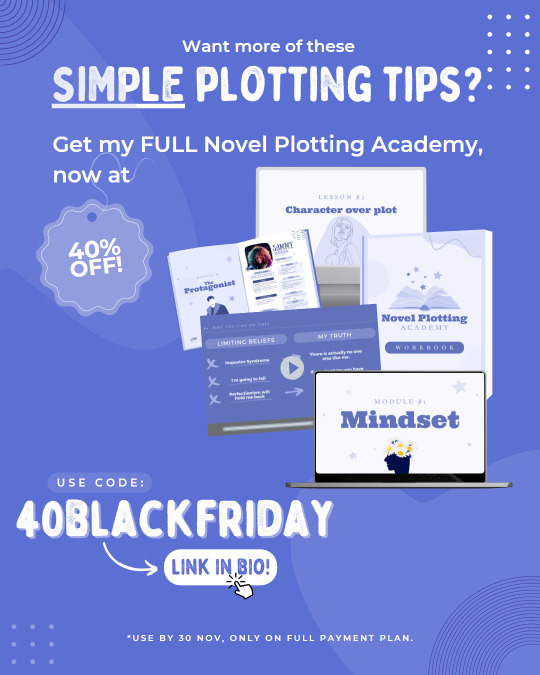
Want more of these SIMPLE plotting tips? Get my FULL Novel Plotting Academy, now at 40% off!
Use the code: 40BLACKFRIDAY
Grab it HERE or through the link below!
#reblog#writing advice#writing tips#writing#writeblr#writblr#creative writing#character arc#character development#negative arc
100 notes
·
View notes
Text
Words for Skin Tone | How to Describe Skin Color
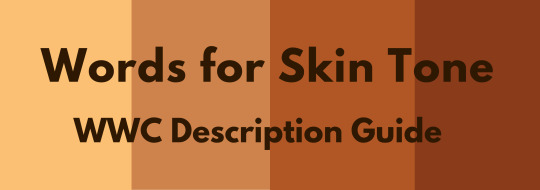
We discussed the issues describing People of Color by means of food in Part I of this guide, which brought rise to even more questions, mostly along the lines of “So, if food’s not an option, what can I use?” Well, I was just getting to that!
This final portion focuses on describing skin tone, with photo and passage examples provided throughout. I hope to cover everything from the use of straight-forward description to the more creatively-inclined, keeping in mind the questions we’ve received on this topic.
Standard Description
Basic Colors

Pictured above: Black, Brown, Beige, White, Pink.
“She had brown skin.”
This is a perfectly fine description that, while not providing the most detail, works well and will never become cliché.
Describing characters’ skin as simply brown or beige works on its own, though it’s not particularly telling just from the range in brown alone.
Complex Colors
These are more rarely used words that actually “mean” their color. Some of these have multiple meanings, so you’ll want to look into those to determine what other associations a word might have.

Pictured above: Umber, Sepia, Ochre, Russet, Terra-cotta, Gold, Tawny, Taupe, Khaki, Fawn.
Complex colors work well alone, though often pair well with a basic color in regards to narrowing down shade/tone.
For example: Golden brown, russet brown, tawny beige…
As some of these are on the “rare” side, sliding in a definition of the word within the sentence itself may help readers who are unfamiliar with the term visualize the color without seeking a dictionary.
“He was tall and slim, his skin a russet, reddish-brown.”
Comparisons to familiar colors or visuals are also helpful:
“His skin was an ochre color, much like the mellow-brown light that bathed the forest.”
Modifiers
Modifiers, often adjectives, make partial changes to a word.The following words are descriptors in reference to skin tone.
Dark - Deep - Rich - Cool
Warm - Medium - Tan
Fair - Light - Pale
Rich Black, Dark brown, Warm beige, Pale pink…
If you’re looking to get more specific than “brown,” modifiers narrow down shade further.
Keep in mind that these modifiers are not exactly colors.
As an already brown-skinned person, I get tan from a lot of sun and resultingly become a darker, deeper brown. I turn a pale, more yellow-brown in the winter.
While best used in combination with a color, I suppose words like “tan” “fair” and “light” do work alone; just note that tan is less likely to be taken for “naturally tan” and much more likely a tanned White person.
Calling someone “dark” as description on its own is offensive to some and also ambiguous. (See: Describing Skin as Dark)
Undertones
Undertones are the colors beneath the skin, seeing as skin isn’t just one even color but has more subdued tones within the dominating palette.
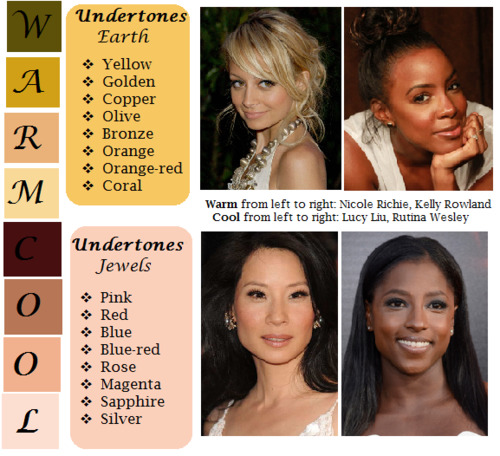
pictured above: warm / earth undertones: yellow, golden, copper, olive, bronze, orange, orange-red, coral | cool / jewel undertones: pink, red, blue, blue-red, rose, magenta, sapphire, silver.
Mentioning the undertones within a character’s skin is an even more precise way to denote skin tone.
As shown, there’s a difference between say, brown skin with warm orange-red undertones (Kelly Rowland) and brown skin with cool, jewel undertones (Rutina Wesley).
“A dazzling smile revealed the bronze glow at her cheeks.”
“He always looked as if he’d ran a mile, a constant tinge of pink under his tawny skin.”
Standard Description Passage
“Farah’s skin, always fawn, had burned and freckled under the summer’s sun. Even at the cusp of autumn, an uneven tan clung to her skin like burrs. So unlike the smooth, red-brown ochre of her mother, which the sun had richened to a blessing.”
-From my story “Where Summer Ends” featured in Strange Little Girls
Here the state of skin also gives insight on character.
Note my use of “fawn” in regards to multiple meaning and association. While fawn is a color, it’s also a small, timid deer, which describes this very traumatized character of mine perfectly.
Though I use standard descriptions of skin tone more in my writing, at the same time I’m no stranger to creative descriptions, and do enjoy the occasional artsy detail of a character.
Creative Description
Whether compared to night-cast rivers or day’s first light…I actually enjoy seeing Characters of Colors dressed in artful detail.
I’ve read loads of descriptions in my day of white characters and their “smooth rose-tinged ivory skin”, while the PoC, if there, are reduced to something from a candy bowl or a Starbucks drink, so to actually read of PoC described in lavish detail can be somewhat of a treat.
Still, be mindful when you get creative with your character descriptions. Too many frills can become purple-prose-like, so do what feels right for your writing when and where.
Not every character or scene warrants a creative description, either. Especially if they’re not even a secondary character.
Using a combination of color descriptions from standard to creative is probably a better method than straight creative. But again, do what’s good for your tale.
Natural Settings - Sky
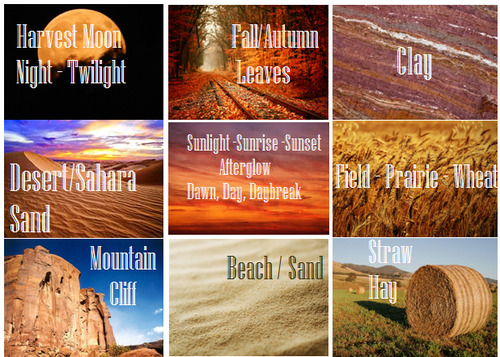
Pictured above: Harvest Moon -Twilight, Fall/Autumn Leaves, Clay, Desert/Sahara, Sunlight - Sunrise - Sunset - Afterglow - Dawn- Day- Daybreak, Field - Prairie - Wheat, Mountain/Cliff, Beach/Sand/Straw/Hay.
Now before you run off to compare your heroine’s skin to the harvest moon or a cliff side, think about the associations to your words.
When I think cliff, I think of jagged, perilous, rough. I hear sand and picture grainy, yet smooth. Calm. mellow.
So consider your character and what you see fit to compare them to.
Also consider whose perspective you’re describing them from. Someone describing a person they revere or admire may have a more pleasant, loftier description than someone who can’t stand the person.
“Her face was like the fire-gold glow of dawn, lifting my gaze, drawing me in.”
“She had a sandy complexion, smooth and tawny.”
Even creative descriptions tend to draw help from your standard words.
Flowers
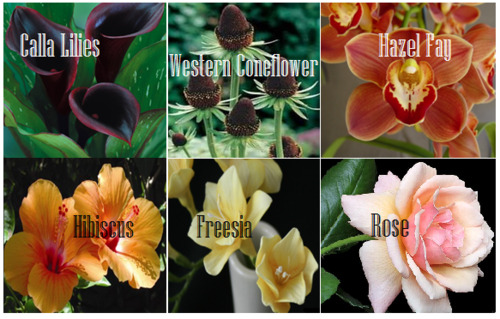
Pictured above: Calla lilies, Western Coneflower, Hazel Fay, Hibiscus, Freesia, Rose
It was a bit difficult to find flowers to my liking that didn’t have a 20 character name or wasn’t called something like “chocolate silk” so these are the finalists.
You’ll definitely want to avoid purple-prose here.
Also be aware of flowers that most might’ve never heard of. Roses are easy, as most know the look and coloring(s) of this plant. But Western coneflowers? Calla lilies? Maybe not so much.
“He entered the cottage in a huff, cheeks a blushing brown like the flowers Nana planted right under my window. Hazel Fay she called them, was it?”
Assorted Plants & Nature

Pictured above: Cattails, Seashell, Driftwood, Pinecone, Acorn, Amber
These ones are kinda odd. Perhaps because I’ve never seen these in comparison to skin tone, With the exception of amber.
At least they’re common enough that most may have an idea what you’re talking about at the mention of “pinecone.“
I suggest reading out your sentences aloud to get a better feel of how it’ll sounds.
“Auburn hair swept past pointed ears, set around a face like an acorn both in shape and shade.”
I pictured some tree-dwelling being or person from a fantasy world in this example, which makes the comparison more appropriate.
I don’t suggest using a comparison just “cuz you can” but actually being thoughtful about what you’re comparing your character to and how it applies to your character and/or setting.
Wood

Pictured above: Mahogany, Walnut, Chestnut, Golden Oak, Ash
Wood can be an iffy description for skin tone. Not only due to several of them having “foody” terminology within their names, but again, associations.
Some people would prefer not to compare/be compared to wood at all, so get opinions, try it aloud, and make sure it’s appropriate to the character if you do use it.
“The old warlock’s skin was a deep shade of mahogany, his stare serious and firm as it held mine.”
Metals

Pictured above: Platinum, Copper, Brass, Gold, Bronze
Copper skin, brass-colored skin, golden skin…
I’ve even heard variations of these used before by comparison to an object of the same properties/coloring, such as penny for copper.
These also work well with modifiers.
“The dress of fine white silks popped against the deep bronze of her skin.”
Gemstones - Minerals
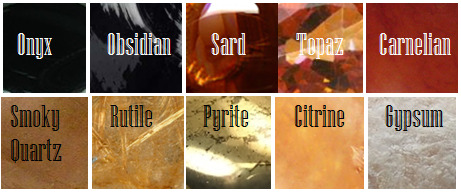
Pictured above: Onyx, Obsidian, Sard, Topaz, Carnelian, Smoky Quartz, Rutile, Pyrite, Citrine, Gypsum
These are trickier to use. As with some complex colors, the writer will have to get us to understand what most of these look like.
If you use these, or any more rare description, consider if it actually “fits” the book or scene.
Even if you’re able to get us to picture what “rutile” looks like, why are you using this description as opposed to something else? Have that answer for yourself.
“His skin reminded her of the topaz ring her father wore at his finger, a gleaming stone of brown, mellow facades.”
Physical Description
Physical character description can be more than skin tone.
Show us hair, eyes, noses, mouth, hands…body posture, body shape, skin texture… though not necessarily all of those nor at once.
Describing features also helps indicate race, especially if your character has some traits common within the race they are, such as afro hair to a Black character.
How comprehensive you decide to get is up to you. I wouldn’t overdo it and get specific to every mole and birthmark. Noting defining characteristics is good, though, like slightly spaced front teeth, curls that stay flopping in their face, hands freckled with sunspots…
General Tips
Indicate Race Early: I suggest indicators of race be made at the earliest convenience within the writing, with more hints threaded throughout here and there.
Get Creative On Your Own: Obviously, I couldn’t cover every proper color or comparison in which has been “approved” to use for your characters’ skin color, so it’s up to you to use discretion when seeking other ways and shades to describe skin tone.
Skin Color May Not Be Enough: Describing skin tone isn’t always enough to indicate someone’s ethnicity. As timeless cases with readers equating brown to “dark white” or something, more indicators of race may be needed.
Describe White characters and PoC Alike: You should describe the race and/or skin tone of your white characters just as you do your Characters of Color. If you don’t, you risk implying that White is the default human being and PoC are the “Other”).
PSA: Don’t use “Colored.” Based on some asks we’ve received using this word, I’d like to say that unless you or your character is a racist grandmama from the 1960s, do not call People of Color “colored” please.
Not Sure Where to Start? You really can’t go wrong using basic colors for your skin descriptions. It’s actually what many people prefer and works best for most writing. Personally, I tend to describe my characters using a combo of basic colors + modifiers, with mentions of undertones at times. I do like to veer into more creative descriptions on occasion.
Want some alternatives to “skin” or “skin color”? Try: Appearance, blend, blush, cast, coloring, complexion, flush, glow, hue, overtone, palette, pigmentation, rinse, shade, sheen, spectrum, tinge, tint, tone, undertone, value, wash.
Skin Tone Resources
List of Color Names
The Color Thesaurus
Skin Undertone & Color Matching
Tips and Words on Describing Skin
Photos: Undertones Described (Modifiers included)
Online Thesaurus (try colors, such as “red” & “brown”)
Don’t Call me Pastries: Creative Skin Tones w/ pics I
Writing & Description Guides
WWC Featured Description Posts
WWC Guide: Words to Describe Hair
Writing with Color: Description & Skin Color Tags
7 Offensive Mistakes Well-intentioned Writers Make
I tried to be as comprehensive as possible with this guide, but if you have a question regarding describing skin color that hasn’t been answered within part I or II of this guide, or have more questions after reading this post, feel free to ask!
~ Mod Colette
#reblog#writing tips#writing advice#writing#writeblr#writblr#creative writing#character description#description#character#did i reblog this already#idk but worth reblogging again
166K notes
·
View notes
Text
“I tell students, when in doubt, to title their story after the smallest concrete object in their story. I warn them off plays on words, (‘The Rent Also Rises’–no; ‘Life in My Cat House’–no) and no grand reaches, either. ‘Reverence,’ ‘Respect,’ ‘Regret,’ 'Greed,’ 'Adventure,’ 'Retribution.’ And never use the worst title of all time, 'The Gift,’ a story I read six times a year.”
— Ron Carlson (via writingquotes)
2K notes
·
View notes
Text
Beginner Writer Guide
Beginner writer? Here’s everything you need to know
💜 The basics 💜
Every story consists of a few basic elements you should think about before starting:
Characters
Genre
Central message
Plot
Worldbuilding (especially important in any non-contemporary genre)
Narrative position (Point of view)
💜 Where to start? 💜
Start with your character! What is their story? What sort of predicament do they find themselves in that starts it all up, and why should we be interested in it? What flaw do they have that makes achieving their goal harder and how do they overcome this by the end of the story?
💜 Plot structure 💜

💜 Subplots & side-characters 💜
Of course you want more than just the one character (in most cases!), so you should think about what other characters are necessary to tell your story. Only create a character when they have something to add to the main story.
Then interweave these subplots with your main character’s journey.
💜 Thematic architecture 💜
What is the central message of your story? This is usually closely tied into what your protagonist is trying to learn and overcome.
What other questions are you exploring?
What themes pop up that can flesh out the purpose & meaning behind the story?
💜 Useful writing tools 💜

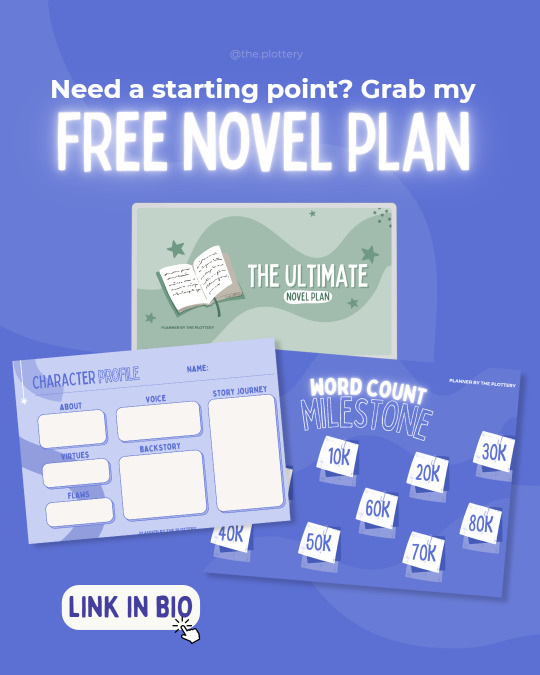
Remember to save this post so you can always refer back to it!
💜 Find my free Novel Plan through the link HERE or below!💜
Also...did you hear about my Black Friday deals?
💜 Novel Plotting Academy 💜
Get 40% off the full price and get lifetime access to the course, take it at any time that suits you. You’ll get all the knowledge and tools you need to plot your novel, from 30+ video lessons, character profiles, one page outlines, writing prompts, character formulas and trackers, and MORE.
Find NPA through the link HERE or below!
💜 Power Plotter 1:1 Coaching💜
Get a whole extra month of personal coaching for FREE when you sign up with the full payment plan (this means 4 extra calls on top of my usual 12) AND completely free lifetime access to Novel Plotting Academy.
Find my Power Plotter 1:1 Coaching through the link HERE or below!
If you have any questions, feel free to DM me! 💜
119 notes
·
View notes
Text
78% of writing is figuring out which font to use.
Fonts to use in your book
Need some font inspiration for formatting your book? Save this post if you’re planning to self-publish soon!


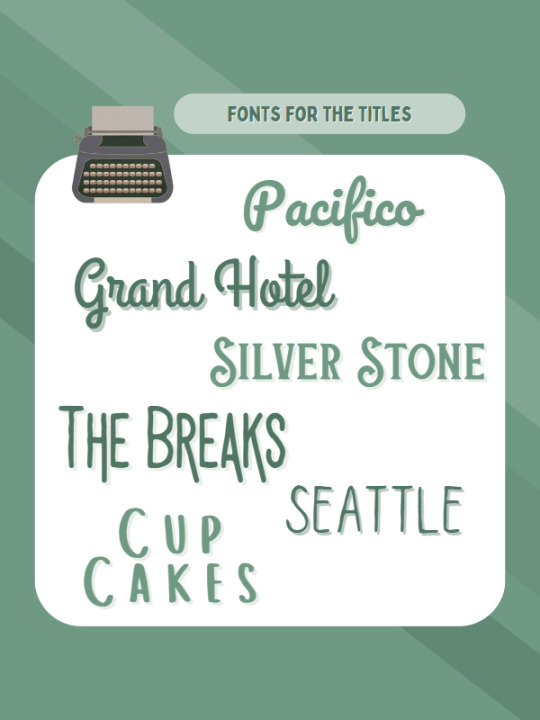
These are some of my favorite fonts to use in formatting your book, and I’ve divided them into what I feel would work best for your text body, the chapter headings, and the actual book title on the cover!
Which ones are your fave? Will you try using these?
31 notes
·
View notes
Photo
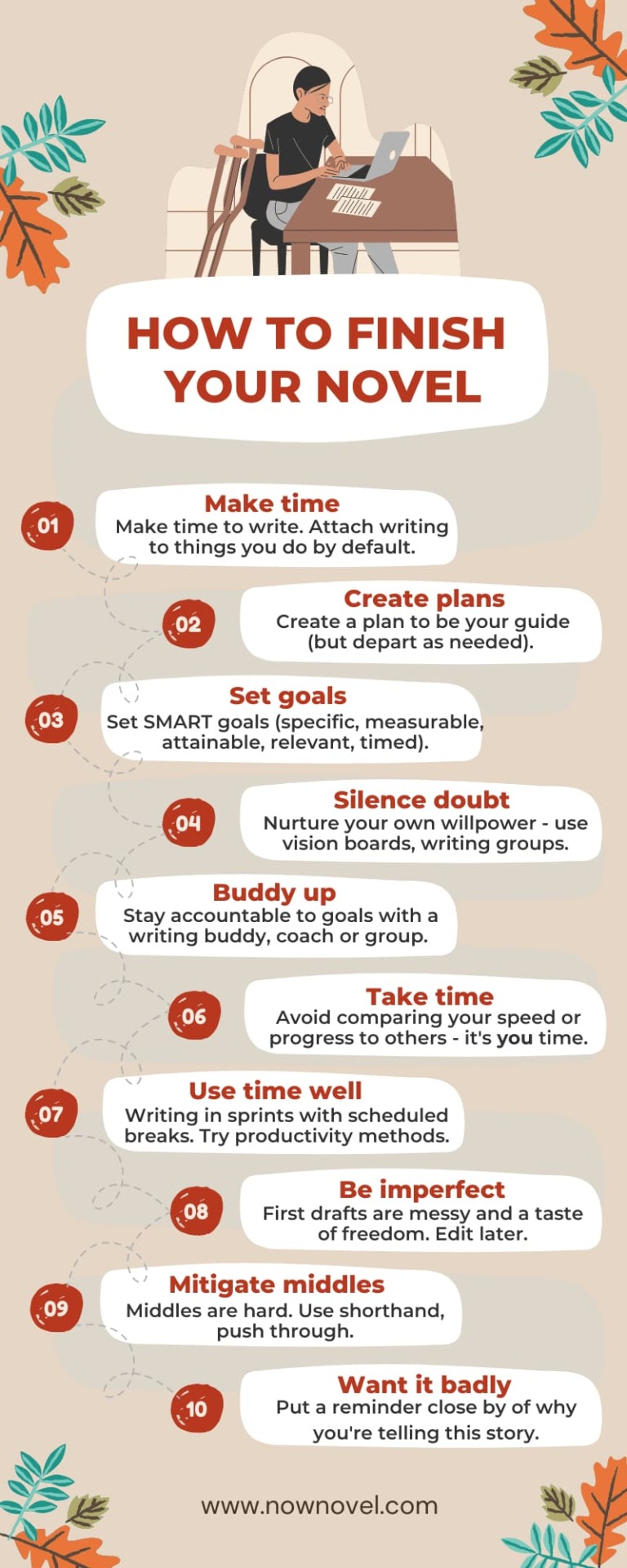
How to Finish a Novel: 10 Ways to Follow Through
Make time to write
Create a story plan (outline)
Write to S.M.A.R.T. goals (specific, measurable, attainable, realistic, and time-based)
Have a system in place to silence doubt
Get a writing buddy
Avoid comparing yourself to others
Use your writing time effectively
Avoid perfectionism (the first draft is for you)
Prepare for the middle slump
Want to finish your book
#reblog#writing advice#writing tips#writing#writeblr#writblr#creative writing#novel writing#advice i need#but will likely forget#or just not follow#tis a me problem#sadge
454 notes
·
View notes
Text
I live somewhere tropical and let me tell you, entering the dense undergrowth of a jungle is like entering a world that lives and breathes around you. Even though I know a busy highway is just on the other side of the overgrown hill I'm cutting through, it still feels like a world away.
Tropical Fantasy
Ancient jungles and forests, blooming with life and color, an organized chaos where you can’t distinguish were the canopy and the floor begin and end. The forest is alive with the sound of a thousand living songs. Each tree, each animal, each plant and fungi is a different spirit.
From neon-colored yet deadly poison frogs, iridiscent hummingbirds, uncanny bats, insects and spiders that look like jewels, mysterious lizards that mimic nature, deadly insect swarms, and cats black as night, it’s hard to distinguish were nature ends and the supernatural begins. Maybe there is no difference.
The desert is also alive. The winds sing through the dunes and cliffs, bringing echoes from times long past, sometimes uncovering the ruins of the first civilizations. Rivers and oases are not lonely places; they are the centers of civilization and trade, full of thriving markets and cities. Salt flats, burning hot mountains, harsh shrubland, strange rocks that seem almost sculpted, dry rivers, ancient fossils and uncanny plants make deserts like no other place in the world.
In the savanna and shrubland, great herds of untamed animals are the lifeblood of people both nomadic and settled. The dry forests with their spiky trees and occassional wildfires are a harsh land, with harsh animals, but even there people make their tribes and cities. Great rivers flow to the sea, under golden sunsets, springing from marshlands and swamps full of ancient animals and spirits that dance under the moonlight.
Atolls with white sand and deep green jungles are surrounded by multicolor coral reefs, home to a diversity of creatures (and monsters, and spirits…) not found anywhere in land. The masters of these seas look to the stars and the waves to find their way between island and island. Every island is a world on itself, with its own history, flora and fauna.
Snow and ice are rare beyond the highest peaks. But hurricanes, moonsons, sandstorms, tropical showers, the hot baking sun of the desert and the calm summer sunsets provide a variety of weather.
Heavy metal armor is not very useful in those climates. Leather, padded armor, and scale and chain mail are the most used; some warriors go almost naked. Light dress is common, but it doesn’t mean it’s drab. Colorful silk and cotton, painted with fine dyes and cleaned with aromatic perfumes, decorate nobles, princesses, and sages.
An inmense variety of fruit, crops, produce, meat and spices feed the people of the warm regions. Workers rest from the afternoon sun under shades, while they look at the valleys completely transformed into terraces for rice and tea. In the dry mountain valleys, other peoples plant potatoe, maize, quinoa and yuca, between so many other crops. Portions of many jungles are actually carefully constructed gardens, that grow fruit, wood and medicinal plants. The rivers and swamps teem with fish and stranger animals. The sun-baked savannas and pampas have inmense herds of millions of animals which provide plentiful hunting for people… and other predators.
Great port cities made of intrincately decorated wood grow in the mouths of rivers, some even extend further into the water, into floating houses. The great deserts have cities of brick and mud, decorated with precious stones and geometrical mosaics. Swamps have artificial islands of rich soil where crops, and then cities and pyramids grow. Great temples rise in the jungles, carved into the trees themselves. In the highest valleys and mountaintops, stone cities are the capitals of great empires, their temples covered in gold and silver.
Mysterious sacred groves abound inside the jungle, around gigantic trees, beautiful waterfalls, and otherworldy metal rocks. Giant mounts and mesas that look like ancient warriors or animals are found in the deserts and savannas of the world. Beast long extinct elsewhere lurk in remote places. The nights are full of whispers from the inexplicable. Floating mountains, plains of living fire, lakes that are portals to other worlds, salt flats that are mirrors to the heavens, giant trees that have their own ecosystems and civilizations. Temples from the earliest civilizations are buried in the desert sands and the mountain valleys. And who knows what’s below the sea?
And this is just barely getting into the cultures and religions of each region. From Latin America to Africa to Asia to Australia, you can find so many cultures and civilizations, each one with their own unique enviroment and history.
I’m tired of temperate forests, alpine mountains and stone castles, and every fantasy setting looking like Average European Woodland With Magic. There is so much beyond that.
520 notes
·
View notes
Text
Avoiding Writing Toxic Relationships
- My biggest problem with YA is the glorification of toxic relationships. Especially since it is targeted at a younger group of people who often idolize said relationships. So here’s a guide for determining if your MC’s love interest is toxic, or just a normal flawed person.
FIGHTING
- To make a realistic relationship, your MC and their love interest are going to fight. They are (most likely) young and in a high stress situation. It would be completely realistic for them to fight. However, too often in YA, these fights are taken past an unforgivable line. Physical violence is where the line in crossed. They should not push, slap, kick, their partner. If it is lover’s to enemies, this is okay when they are enemies, as long as it stops once they’re in a relationship.
- This goes for girl love interests as well. I’ve seen countless books have the girl slap or kick her male love interest after a small mistake or to show she’s angry at him. Authors do it to show that she’s a “strong female character”. Don’t do that. It’s not something cute. When I was twelve and began reading The Mortal Instruments, I got to the scene where Clary slapped Jace and was confused about whether or not they were really supposed to be interested in each other. (There are several things with their entire relationship. It really is just toxic. I had to stop reading after the second book the first time around.)
- Have your characters be in the wrong! It doesn’t make them toxic, it makes them human and relatable. Have them snap at their love interests over hurt feelings or in a stressful situation. But have them apologize and do better. Not only does it help show the audience that they have a healthy relationship, it shows character development. A character should not be the same as they were at the beginning of the book. They need to learn something. This is a good place to start if you are at a loss.
CONSENT
- What else makes YA couples toxic besides fighting? Consent. I’ve had to stop reading many YA books, because I was so put off by a lack of consent. I’ve seen authors frame forced kisses as romantic, even when the main protagonist was initially mad about it. (Sarah J. Maas books.) I’ve seen characters admit to s*xual assault and and it is framed as romantic because it’s framed as one character pining after the other. There always has to be consult. Characters don’t have to ask for everything, especially if they have an understanding with each other. Forcing things is different. Two best friends, or lovers, who don’t ask to hold hands, lay on top of each other, kiss, etc. (especially if it is common in their relationship) is completely different then knowing someone doesn’t like you and forcing yourself on them or admitting to them you don’t care about their boundaries.
TOXIC RELATIONSHIPS
- Have toxic relationships in your stories. Condemn them and show they are bad. Show red flags for young audiences and warn them to stay away from similar people. Have your character grow and over come people who don’t really care about them. Don’t use “he/she had a troubled past and has trauma. Now their a badboy/girl in need of love” to excuse their toxic or controlling behavior.
#reblog#writing advice#writing tips#writing#writeblr#writblr#creative writing#relationships#relationship dynamics#character relations#toxic relationships
1K notes
·
View notes
Text
Writing action scenes (fighting in particular) can be super difficult to master!
But here are my best tips to consider when you write one →
📍 Pacing is key
When you’re reading an action scene, you expect things to move quite quickly. Be sure to create a consistent and punchy pacing throughout your scene.
Don’t spend paragraphs painting the image of the location, or the clothes of the characters. Only the important details that should slow down the scene should be described more!
📍Balance of action and description
When writing a fighting scene, it will likely have less internal monologue and dialogue, and more focus on action and description.
You might have a tendency to drift towards only action during these scenes (She ran, he jumped, etc.) but remember to intersperse it with occasional details that paint the visuals beyond the so-called “choreography.”
📍 Consider sentence structure
During an action scene, everything should feel quicker. Consider writing punchier and shorter sentences to help the rhythm, too!
📍 Ease up on dialogue
Dialogue is a great way to break up a chunky action sequence, but keep this short. Unless it’s for comedic effect, no one’s going to be making speeches or having full conversations during a fight.
📍 Consider location & props
To be a bit more original and allow your reader more interesting visuals, consider how to use your setting towards the scene. What sort of things can we find in this location, and can your characters use them to their benefit - or their detriment?
Need helping plotting your novel out? Check out Novel Plotting Academy and don’t wait for New Year’s resolutions to start writing!
Enroll today through the link HERE or below!
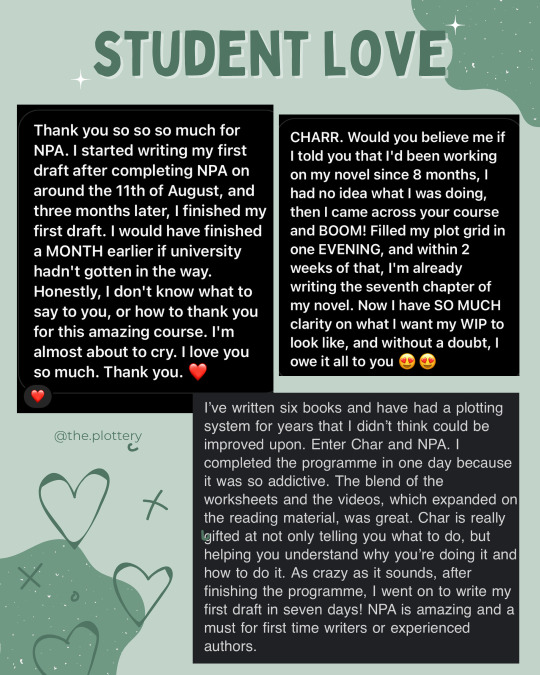
#reblog#writing advice#writing tips#writing#writblr#creative writing#fight scene#fighting scene#prose#narrative
132 notes
·
View notes